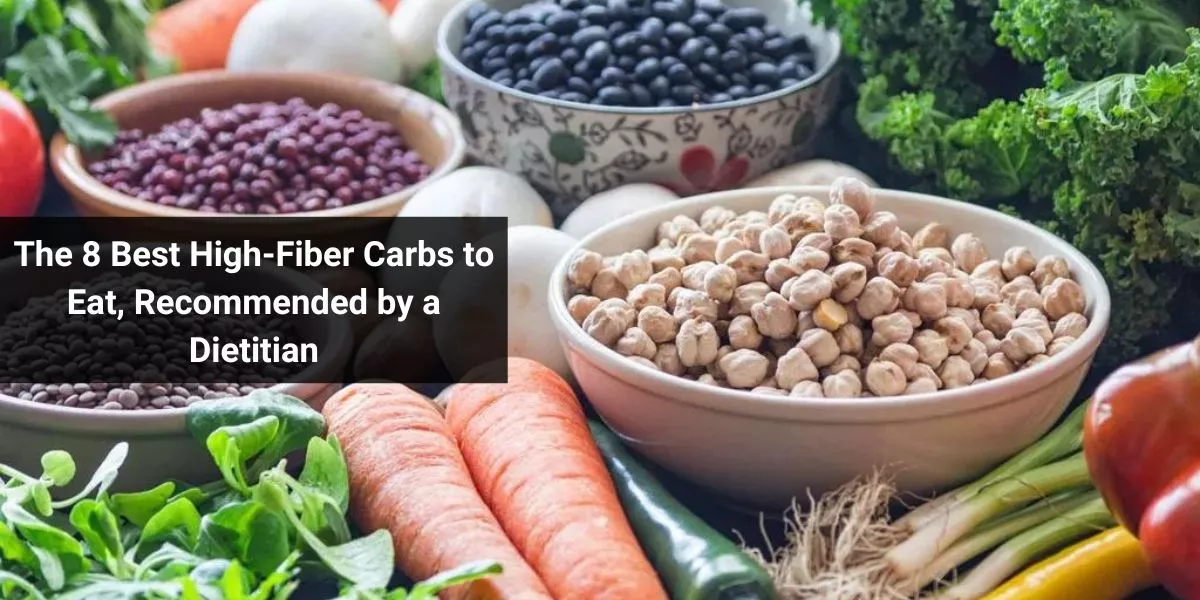Hey there, health-conscious readers! If you’re on a quest for a healthier diet, you’re in the right place. We all know that carbs often get a bad rap, but the truth is, not all carbs are created equal. In fact, some carbs can be incredibly beneficial for your health. In this article, we’re going to explore the world of high-fiber carbs and unveil the top 8 choices recommended by dietitians. Get ready to discover how you can enjoy delicious, satisfying carbs while promoting your well-being.
What Are High-Fiber Carbs?
Before we dive into our list of the best high-fiber carbs, let’s clarify what we mean by “high-fiber.” High-fiber carbs are carbohydrates that contain a significant amount of dietary fiber. Dietary fiber is the indigestible part of plant foods that adds bulk to your diet and offers numerous health benefits. It aids digestion, helps maintain a healthy weight, and can even lower the risk of chronic diseases.
The Benefits of High-Fiber Carbs
Now that we know what high-fiber carbs are, let’s explore the benefits of including them in your diet:
1. Improved Digestion: High-fiber foods help prevent constipation and promote regular bowel movements, keeping your digestive system healthy.
2. Weight Management: Fiber-rich foods tend to be more filling, which can help control your appetite and support weight loss efforts.
3. Heart Health: A high-fiber diet can lower cholesterol levels and reduce the risk of heart disease.
4. Blood Sugar Control: Fiber can help stabilize blood sugar levels, making it an essential component of a diabetic-friendly diet.
5. Gut Health: Fiber acts as a prebiotic, nourishing the beneficial bacteria in your gut, which is crucial for a healthy microbiome.
The Top 8 High-Fiber Carbs
Let’s jump into the main event and explore the best high-fiber carbs you should consider adding to your diet:
1. Oats

Starting our list strong with oats! These whole grains are a breakfast favorite and are packed with soluble fiber. They’re not only a filling way to kickstart your day but also help keep your cholesterol levels in check.
2. Quinoa

Quinoa is a complete protein and an excellent source of dietary fiber. It’s versatile, easy to prepare, and makes a great base for salads, bowls, or as a side dish.
3. Sweet Potatoes

Sweet potatoes are a delicious source of fiber and are rich in vitamins and antioxidants. Roast, mash, or bake them for a delightful addition to your meals.
4. Legumes (Beans, Lentils, Chickpeas)

Beans, lentils, and chickpeas are fiber-packed and versatile. They can be used in soups, stews, salads, or even to make meatless burgers.
5. Brown Rice

Swap white rice for brown rice to get more fiber in your diet. It’s a great side dish or base for stir-fries and grain bowls.
6. Whole Wheat Pasta

If you’re a pasta lover, opt for whole wheat pasta to boost your fiber intake. It has a nuttier flavor and pairs well with a variety of sauces.
7. Berries

Berries like strawberries, blueberries, and raspberries are not only tasty but also fiber-rich. Add them to your yogurt, oatmeal, or enjoy them as a snack.
8. Brussels Sprouts

Don’t underestimate the power of veggies! Brussels sprouts are a cruciferous vegetable packed with fiber, vitamins, and minerals. Roast or sauté them for a delicious side dish.
Conclusion
There you have it, folks – the top 8 high-fiber carbs that should have a prominent place in your diet. Incorporating these foods into your meals can help you maintain a healthier lifestyle, improve your digestion, and reduce the risk of various health conditions. So go ahead, load up your plate with these fiber-rich delights and savor both the taste and the health benefits!
FAQ:
1. How can I incorporate more high-fiber carbs into my diet?
You can start by gradually replacing refined grains with whole grains, including more legumes and vegetables in your meals, and snacking on fiber-rich fruits like berries.
2. Can high-fiber carbs help with weight loss?
Yes, they can! High-fiber foods are more filling, which can help control your appetite and reduce overall calorie intake, making weight management easier.
3. Are there any side effects of consuming too much fiber?
Consuming excessive fiber can lead to digestive discomfort like bloating and gas. It’s essential to increase your fiber intake gradually and drink plenty of water to avoid these issues.
4. How much fiber should I aim for in my daily diet?
The recommended daily intake of fiber varies, but most adults should aim for at least 25-30 grams of fiber per day. However, it’s best to consult with a dietitian to determine your specific dietary needs.
5. Are there any high-fiber carbs I should avoid if I have certain dietary restrictions?
If you have dietary restrictions, such as gluten intolerance or diabetes, be mindful of your choices. Consult with a healthcare professional or dietitian to identify suitable high-fiber options that align with your specific needs.



